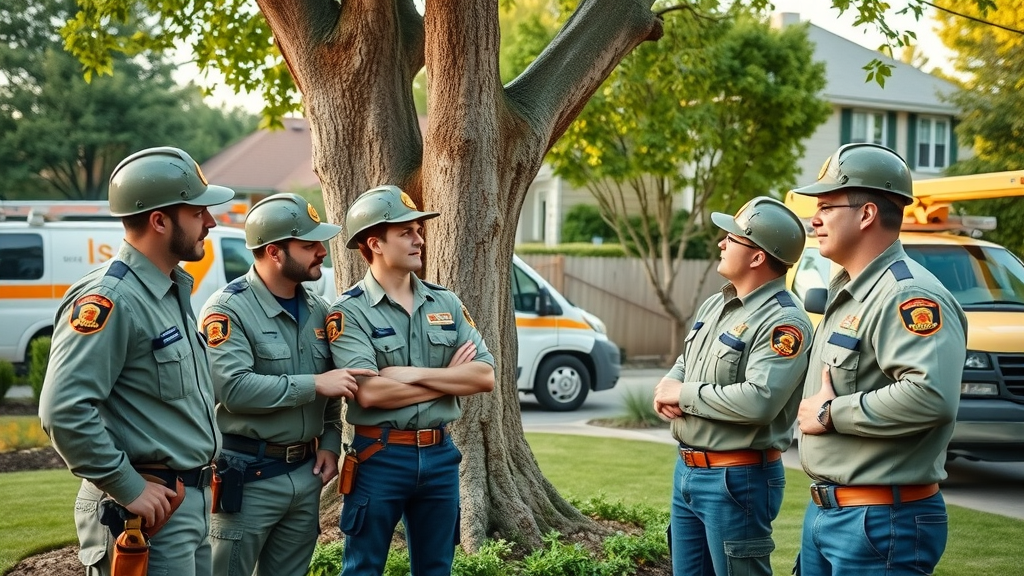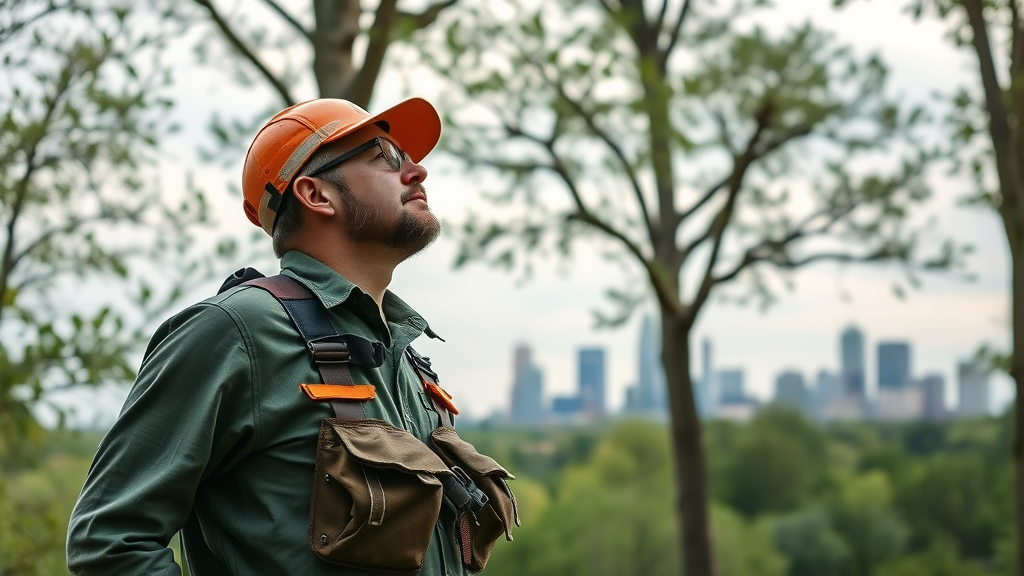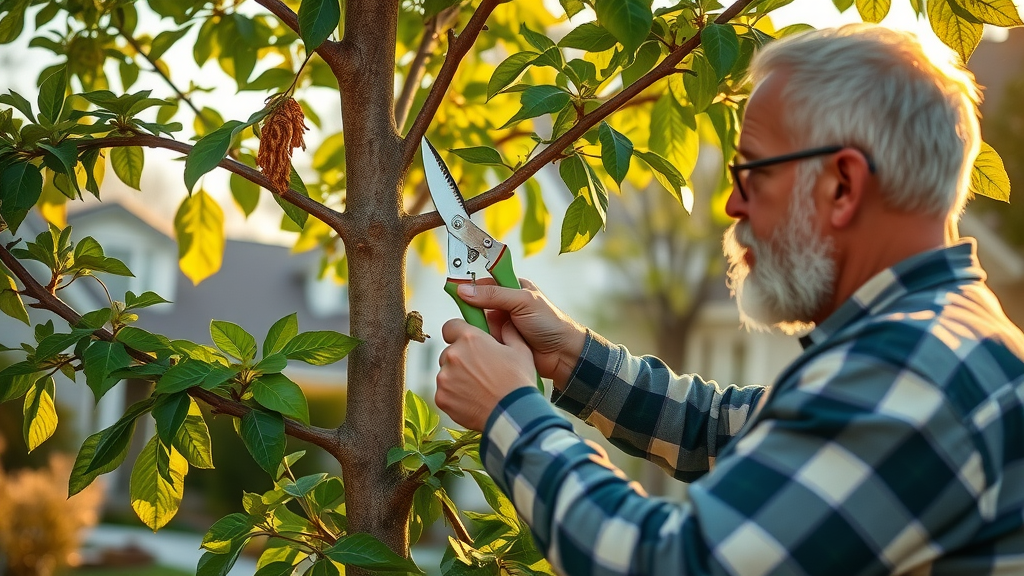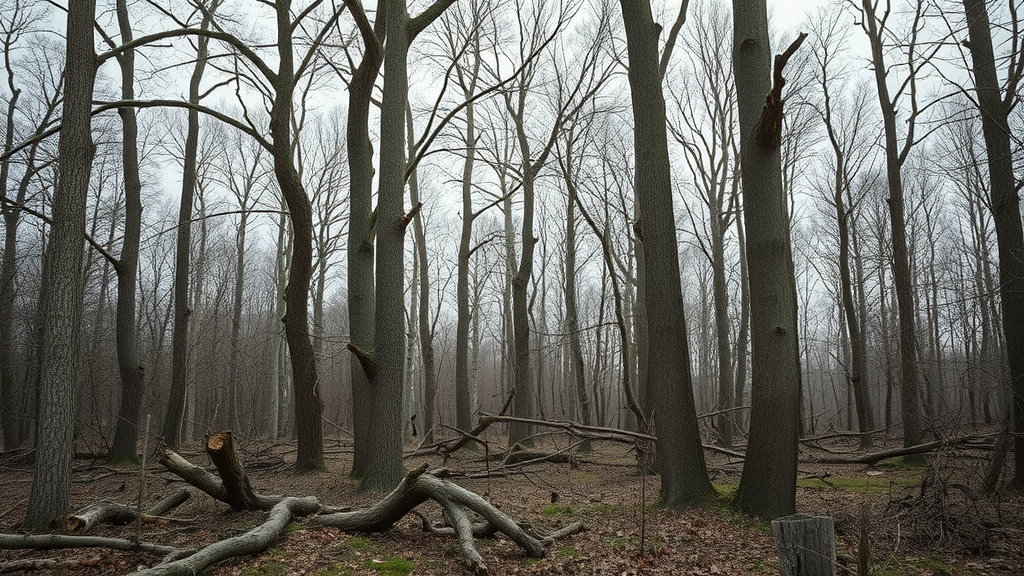Looking to keep your Kansas City trees lush and vibrant year-round? Want the inside scoop on how professional arborists safeguard your urban forest from the city’s most destructive pests? Kansas City tree pest management isn’t just about saving trees—it’s about protecting your entire community, property value, and the rich biodiversity that makes our city beautiful. In this guide, you’ll uncover proven tactics, learn how to spot early warning signs, and find actionable steps to ensure your landscape stays healthy and pest-free. Let’s reveal the secrets professionals don’t want pests—or homeowners—to miss!
Unlocking Kansas City Tree Pest Management: Why Local Solutions Matter
Every city has its own unique ecosystem and challenges when it comes to tree health—and Kansas City tree pest management is no different. The region’s distinct seasons, high humidity, and variety of native and introduced tree species create a special environment where certain pests flourish and others are less of a threat. That’s why successful pest management must go beyond generic solutions, focusing instead on regional expertise and tailored strategies. Whether you're a homeowner or property manager, understanding these local factors ensures that your trees aren’t just surviving, but thriving. By addressing Kansas City’s most common pests with methods proven to work in our climate and soil, you'll preserve the beauty, shade, and value that well-maintained trees provide for generations to come.
Practical examples from neighborhoods across Kansas City highlight the importance of a local approach. For instance, choosing species resilient to the emerald ash borer or working with a certified arborist who knows the timing of seasonal outbreaks can mean the difference between a flourishing tree canopy and expensive removal bills. When you tailor your tree pest management to the city’s climate, pest cycles, and community needs, you safeguard not only your landscape, but also support a healthier, greener Kansas City for all.

-
By reading this post, you’ll discover:
Proven Kansas City tree pest management tactics professionals use
How to identify early signs of pest problems in Kansas City trees
Top pests impacting Kansas City’s urban trees and how to control them
Steps to protect your property and community’s greenery with effective Kansas City tree pest management
Understanding Kansas City Tree Pest Management: Fundamentals Every Property Owner Should Know
Major Pests Affecting Kansas City Trees—Identification and Risks
A crucial part of effective Kansas City tree pest management is recognizing which pests pose the greatest threat and understanding how they operate. Among the city’s most notorious invaders, the emerald ash borer stands as the top threat, having killed millions of ash trees across the Midwest. These iridescent green beetles burrow under the bark, disrupting a tree’s ability to transport nutrients and water. Bagworms, recognizable by their cocoon-like bags dangling from evergreen branches, can defoliate and kill pines and junipers if left unchecked. The pine sawfly, another destructive caterpillar, targets mugo pines and Scotch pines, while scale insects attach themselves to branches and trunks, draining sap and weakening trees over time.
Japanese beetles deserve special mention for their voracious appetites, skeletonizing leaves on linden, maple, and many ornamental species. Early identification of these pests is necessary for rapid intervention. Look for clusters of small, brightly colored beetles, web-like bags on evergreens, or sticky residue on bark and leaves—a telltale sign of sap-sucking insects.

-
Common pests threatening Kansas City trees:
Emerald ash borer
Bagworms
Pine sawfly
Scale insects
Japanese beetles
Recognizing Early Signs of Infestation in Kansas City Tree Pest Management
The earlier you catch a pest problem, the easier it is to stop the damage and save your tree. Effective Kansas City tree pest management starts with understanding and monitoring for the first hints of trouble. Leaf discoloration—especially sudden yellowing or browning not associated with seasonal change—is a classic red flag. Watch for premature leaf drop outside of autumn, which can signal other stressors like borers or disease. Another early warning sign is an increase in woodpecker activity. These birds are natural predators drawn to trees infested with wood-boring insects, so if you see them pecking around your ash trees, it’s time to inspect more closely.
Bark splitting and the sudden appearance of small, round exit holes—often left by emerging adult beetles—should never be ignored. Carefully peel back a section of bark if you suspect a problem: winding galleries or unusual insect larvae are an immediate call to seek professional help. The bottom line? Consistent, close observation of your trees throughout the growing season is fundamental to disrupting pest lifecycles before they become widespread.
-
Early warning symptoms to monitor:
Leaf discoloration
Unusual woodpecker activity
Premature leaf drop
Bark splitting and exit holes
Proven Strategies for Effective Kansas City Tree Pest Management
Integrated Pest Management (IPM) for Kansas City Trees
Savvy property owners and tree care professionals in Kansas City are increasingly adopting Integrated Pest Management (IPM) —a holistic, environmentally conscious approach to pest control. IPM starts with regular monitoring: frequent, thorough inspections to catch issues early, reducing the need for harsh interventions. Instead of immediately reaching for chemical treatments, IPM relies heavily on beneficial insects as biological controls , introducing predators like lady beetles or lacewings that eat scale and other pests. Chemical applications, when required, are minimal, carefully targeted, and often reserved for high-value or highly infested trees.
This approach extends to cultural practices: proper pruning, mulching, and irrigation strengthen tree health—making them less susceptible to attack in the first place. By balancing preventative maintenance with responsible intervention, IPM dramatically reduces the risk of large-scale infestations and protects pollinators and other beneficial wildlife vital to a thriving urban ecosystem.

-
IPM combines the following:
Regular monitoring
Biological controls (beneficial insects)
Minimal, targeted use of chemical treatments
Cultural practices such as pruning and mulching
Eco-Friendly Kansas City Tree Pest Management Techniques
Concerned about chemical runoff or harm to pollinators? Eco-friendly Kansas City tree pest management options are both effective and sustainable for urban and suburban yards. One of the most reliable methods is introducing natural predators—like predatory beetles or parasitic wasps—into your landscape to naturally suppress populations of aggressive pests. Neem oil and horticultural soaps offer gentle, non-toxic alternatives to synthetic sprays, working by smothering soft-bodied bugs without leaving harmful residues on leaves, bark, or in the soil.
Strategic tree species selection and landscape design also play enormous roles in eco-friendly pest control. By planting a diverse mix of region-appropriate trees and ensuring proper placement for air circulation, you reduce the risk of mass infestation and create a more resilient canopy. Eco-conscious property owners regularly monitor trees and quickly remove infested limbs, breaking pest cycles naturally. With the right plan, your urban forest can remain lush and green—without the downside of chemical overload.
-
Sustainable options include:
Introduction of natural predators
Neem oil and horticultural soap sprays
Proper tree species selection and placement to resist pests
Kansas City Tree Pest Management Professional Services: What to Expect
How to Choose a Reliable Kansas City Tree Pest Management Company
With so much at stake, selecting the right Kansas City tree pest management professional means more than checking online reviews. Look for companies employing ISA Certified Arborists , as this designation proves up-to-date credentials and specialized tree pest knowledge. Proven experience with the local pest community is essential. Ask prospective companies about specific successes combating emerald ash borer, bagworms, or other pests commonly plaguing Kansas City trees.
Transparent service guarantees and clear communication signal a reputable company. The best providers offer detailed service outlines and stand behind their work. Don’t forget to ask for local references and check recent reviews—firsthand testimonials often reveal how companies respond to emergencies, stand behind warranties, or customize treatment plans for Kansas City’s unique environment.

-
Select the right expert by looking for:
ISA Certified Arborists
Proven experience with Kansas City pests
Transparent service guarantees
Local references and reviews
What Professional Kansas City Tree Pest Management Treatments Include
When you engage a professional service for Kansas City tree pest management , you can expect comprehensive care far beyond basic treatments. Most companies begin with a thorough pest assessment and diagnostic review, examining each tree for visible symptoms, stressors, and hidden infestations. Once pests are identified, experts will suggest safe pesticide applications only if absolutely necessary, prioritizing the health of your family, pets, and pollinators.
Long-term care may involve ongoing monitoring, regular health consultations, and tailored preventative maintenance plans. These often include periodic pruning, soil amendments, and tips on watering and fertilization—all designed to boost your trees’ natural pest resistance. Remember, investing in professional pest management doesn’t just address current problems; it helps future-proof your landscape for years to come.
-
Common service offerings:
Thorough pest assessments and diagnostics
Safe pesticide application
Long-term preventative maintenance plans
Pruning and tree health consultations
Kansas City Tree Pest Management Cost Breakdown and Value
Kansas City Tree Pest Management Service |
Average Cost Range |
|---|---|
Inspection & Diagnosis |
$75 - $150 |
Treatment Applications |
$100 - $300 per tree |
Annual Maintenance Plan |
$200 - $600 |
Emergency Removal |
$300 - $1000 |
Understanding the investment involved in Kansas City tree pest management helps you budget for preventive care and avoid surprise expenses. While inspection and diagnosis are typically a modest up-front cost, treatment applications may quickly add up for larger properties or severe infestations. Investing in an annual maintenance plan often saves money in the long run by preventing catastrophic tree loss and costly emergency removals. Always ask for detailed estimates, and keep in mind that value comes from long-term tree health—not just quick fixes.
People Also Ask About Kansas City Tree Pest Management
What is the most common tree pest problem in Kansas City?
The emerald ash borer is currently the most significant threat to Kansas City trees, killing millions of ash trees with its larvae feeding under the bark. Bagworms and Japanese beetles are also widespread and destructive.
How often should you inspect trees for pests in Kansas City?
Homeowners should inspect their trees at least twice per growing season—once in the spring and again in mid-summer. After major storms, an additional check is recommended.
Can you treat Kansas City tree pests without chemicals?
Yes. Introducing beneficial insects, applying horticultural oils, and improving tree care practices can control many pests. Chemical use should only be a last resort, especially near waterways or pollinator habitats.
Expert Insights: Kansas City Tree Pest Management Quotes from Local Arborists
"Vigilance is the most important tool in Kansas City tree pest management. Most infestations can be stopped early through regular monitoring and swift action." — Kansas City Arborist

"Selecting region-appropriate tree species is one of the best preventative steps homeowners can take." — Certified Tree Care Professional
Top Recommendations and Resources for Kansas City Tree Pest Management
-
Key resources for homeowners:
University of Missouri Extension: Tree Pest Guides
Kansas City Parks & Recreation Urban Forestry Division
ISA (International Society of Arboriculture) Midwestern Chapter
Frequently Asked Questions on Kansas City Tree Pest Management
Are city trees treated for pests in Kansas City?
Yes, Kansas City’s urban forestry programs regularly monitor and treat thousands of public trees for pest threats. Priority is given to high-value species and those at risk of rapid decline, such as ash trees threatened by emerald ash borers.
How can I report a severe tree pest problem to city officials?
To report a significant pest issue in public spaces, contact the Kansas City Parks & Recreation Urban Forestry Division directly. For trees on private property impacting neighbors or community safety, reach out to the city’s 311 customer service hotline.
Is tree pest management covered by insurance in Kansas City?
Typically, standard homeowners insurance does not cover pest damage or removal. However, storm-related damage caused by falling limbs or trees may be covered. Review your policy or speak with your insurance provider for specific coverage details relating to tree care.
Protect Your Landscape: Kansas City Tree Pest Management Action Steps

-
Essential steps:
Inspect your trees regularly for pest symptoms
Prune and dispose of infected limbs safely
Contact certified Kansas City tree pest management professionals when in doubt
Encourage community members to stay vigilant and share findings
Take action today: Vigilance, proactive care, and partnering with local professionals will protect your trees, property, and community for years to come.
 Add Row
Add Row  Add
Add 




Write A Comment